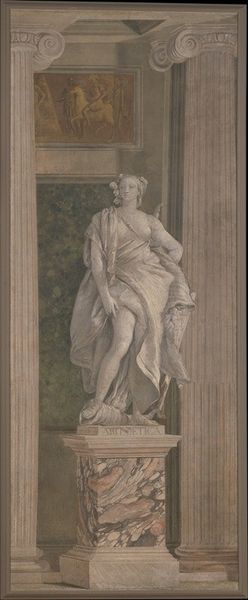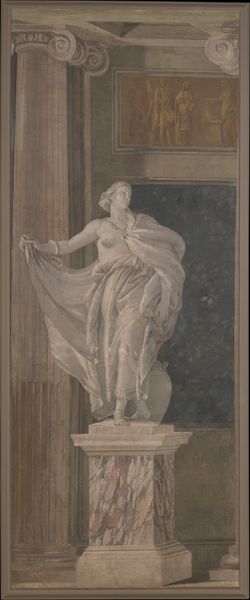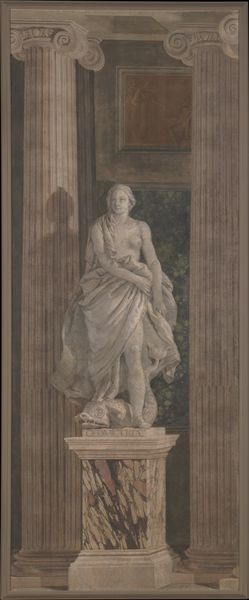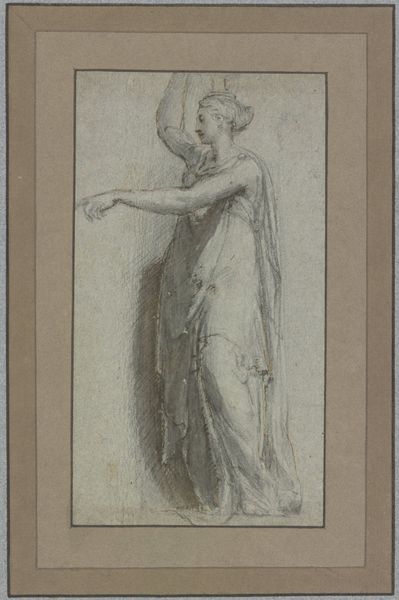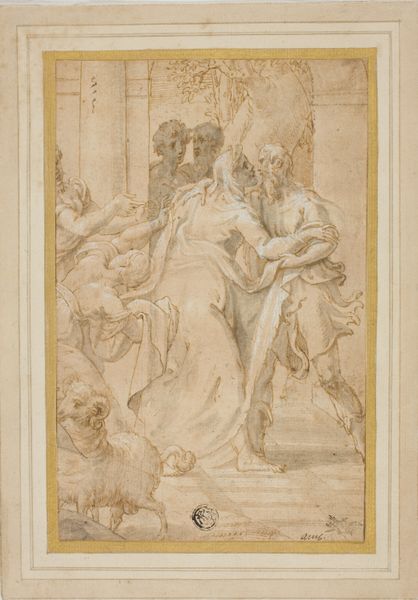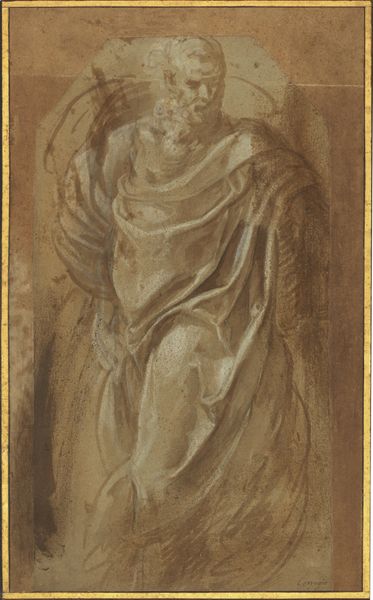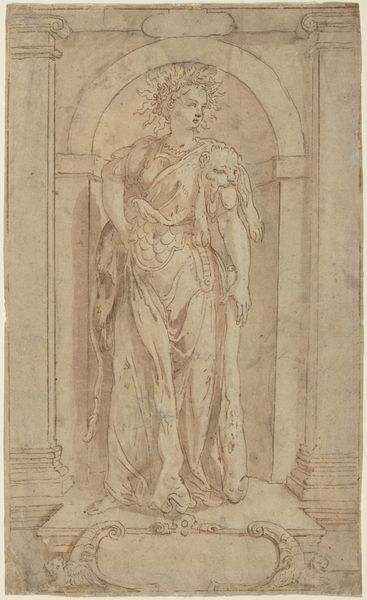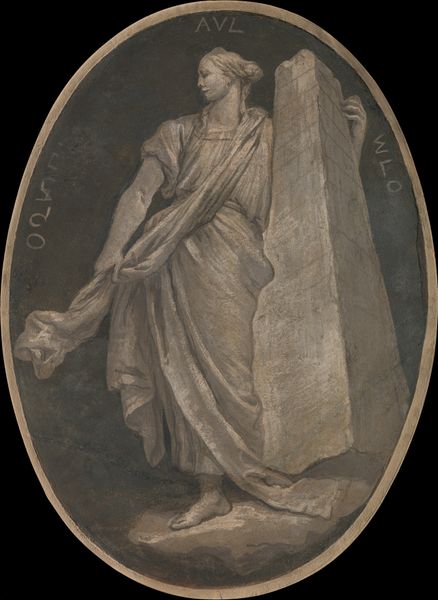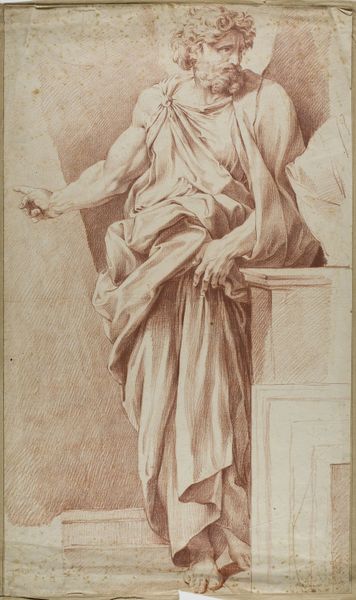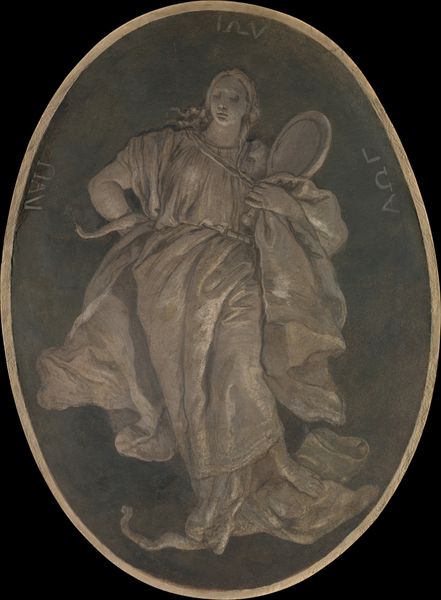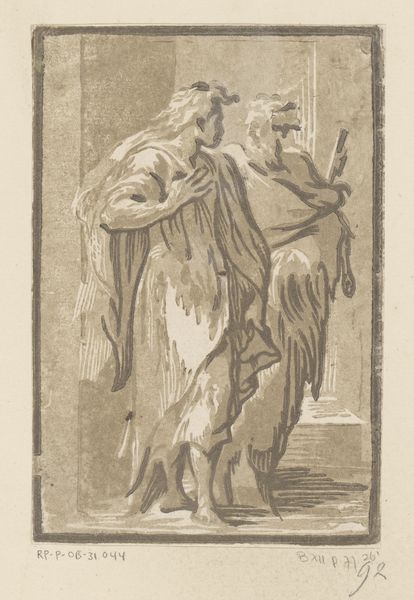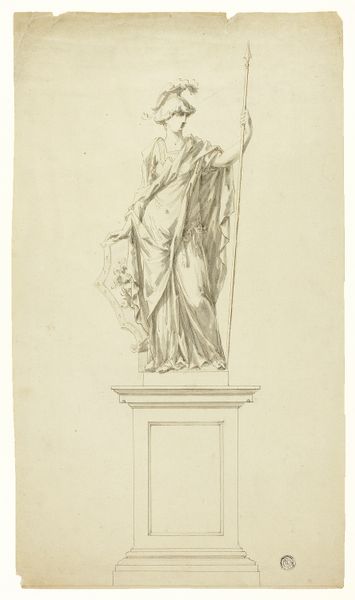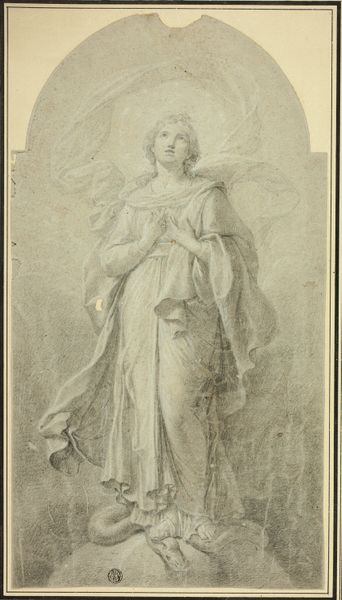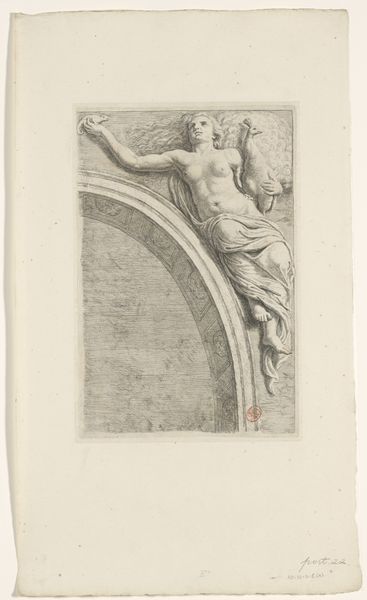
Allegorical Figure Representing Grammar 1760
0:00
0:00
painting, oil-paint
#
allegory
#
baroque
#
painting
#
oil-paint
#
figuration
#
oil painting
#
history-painting
#
academic-art
Dimensions: 146 x 57 7/8 in. (370.8 x 147 cm)
Copyright: Public Domain
Giovanni Battista Tiepolo created this oil on canvas painting, Allegorical Figure Representing Grammar. The artist was working during the 18th century, a period defined by the Enlightenment, with its emphasis on reason, science, and the classification of knowledge. Tiepolo presents Grammar as a statuesque, pale-skinned woman, draped in classical robes, set amongst architectural elements. This representation reflects the period's fascination with classical antiquity and the concept of ideal beauty which, consciously or unconsciously, continues to evoke ideas of racial and cultural superiority. The figure stands atop a pedestal, a symbol of authority and a suggestion that grammar is the foundation of all knowledge. But let's also consider who had access to this knowledge. Grammar, and education more broadly, was a privilege, often reserved for wealthy, white men. Tiepolo’s artwork is an expression of the intellectual and social hierarchies of his time. It reminds us to consider whose voices were – and still are – amplified and whose were silenced.
Comments
No comments
Be the first to comment and join the conversation on the ultimate creative platform.
